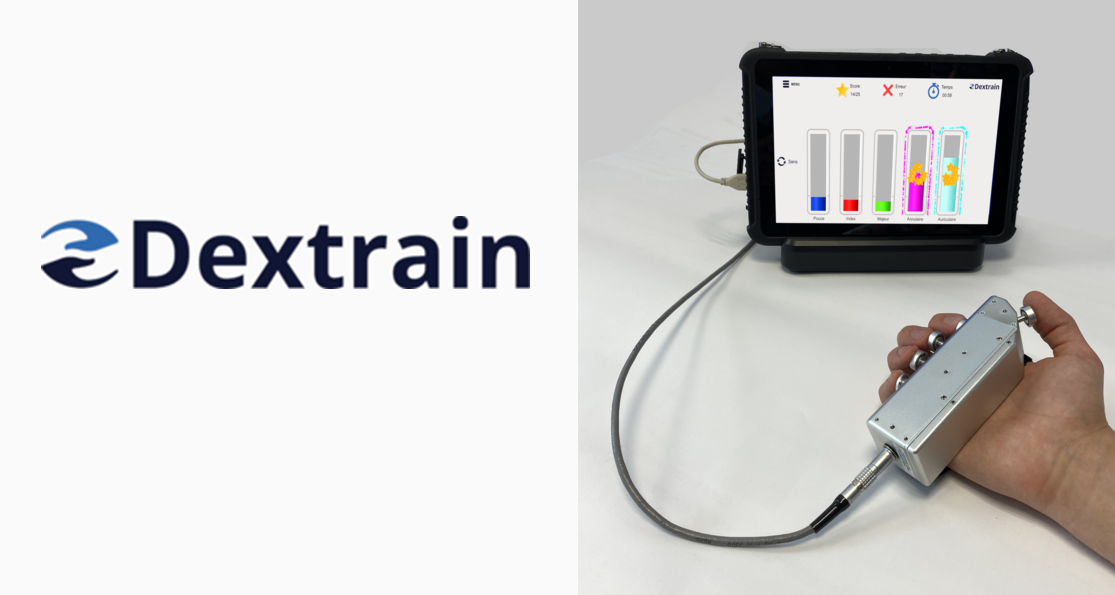[ad_1]
The start-up Dextrain is launching an innovative medical device to help patients recover the dexterity of their hands after a stroke. Discovery.
In France, 140,000 people are victims of a stroke each year and more than 500,000 French people are currently living with after-effects. It is the leading cause of acquired disability in adults. Up to 50% of stroke survivors experience reduced hand and finger function3. This deficit limits the autonomy of patients in everyday activities and strongly impacts their quality of life.
Many other neurological diseases can lead to impaired manual dexterity, including multiple sclerosis, traumatic brain injury, or Parkinson’s disease. Despite the development of training robots for arm and shoulder movements, specific hand dexterity tools are still lacking.
To meet this need, Dextrain announces the launch of Dextrain Manipulandum, a medical device aimed at improving the independence and quality of life of many patients after stroke. This innovation, marketed this June, is the culmination of a research program carried out at the Paris Institute of Psychiatry and Neuroscience (Inserm U1266, University of Paris).
The Dextrain Manipulandum, which has just obtained its CE mark in June 2021, combines ultra-precise measurement of finger strength with specific exercises inspired by neuroscience, allowing unparalleled characterization of manual dexterity. This new technology was designed to improve the treatment of patients with manual dexterity deficit following stroke.
“ I am convinced that the new tools developed by Dextrain will revolutionize the diagnosis of manual dexterity and significantly improve the rehabilitation journey of thousands of people suffering from a post-stroke dexterity deficit, which impacts their autonomy and their well-being. to be », Says Loïc Poirier, CEO of Dextrain.
A single tool to assess and re-educate
For patients, the Dextrain Manipulandum facilitates access to more motivating and effective rehabilitation, through personalized exercises. For their part, health professionals have the same tool to measure dexterity disorders and to rehabilitate the functions of the hand.
Concretely, the Dextrain Manipulandum uses five pistons smart health connected to sensors making it possible to measure the forces exerted by the fingers. The information is transmitted to a configurable training program on a PC or tablet. Five visuomotor tasks were developed to specifically assess the ability of patients to control the force, timing and independence of movement of each of the fingers and to perform and memorize a motor sequence. The Dextrain Manipulandum thus constitutes the only solution allowing an objective and multidimensional evaluation of the dexterity with a single tool.
Clinical trials have been conducted in neurological and psychiatric patients. This scientific work has resulted in several publications4 which have provided new information on dexterity disorders in stroke. Impaired finger agility bothers people on a daily basis, whether writing, using a cell phone or buttoning clothing. The Dextrain Manipulandum provides them with a reference medical device to regain their freedom of movement.
” The major advantage of the Dextrain Manipulandum is that it provides an accurate and comprehensive assessment of dexterity. This medical technology also allows targeted training on the deficit of each individual with intensive and motivating exercises. », Explains Påvel Lindberg, co-inventor and chairman of the scientific board of Dextrain. These interactive exercises help keep patients and family members informed and engaged throughout the process.
Source: Dextrain
Similar articles
[ad_2]









